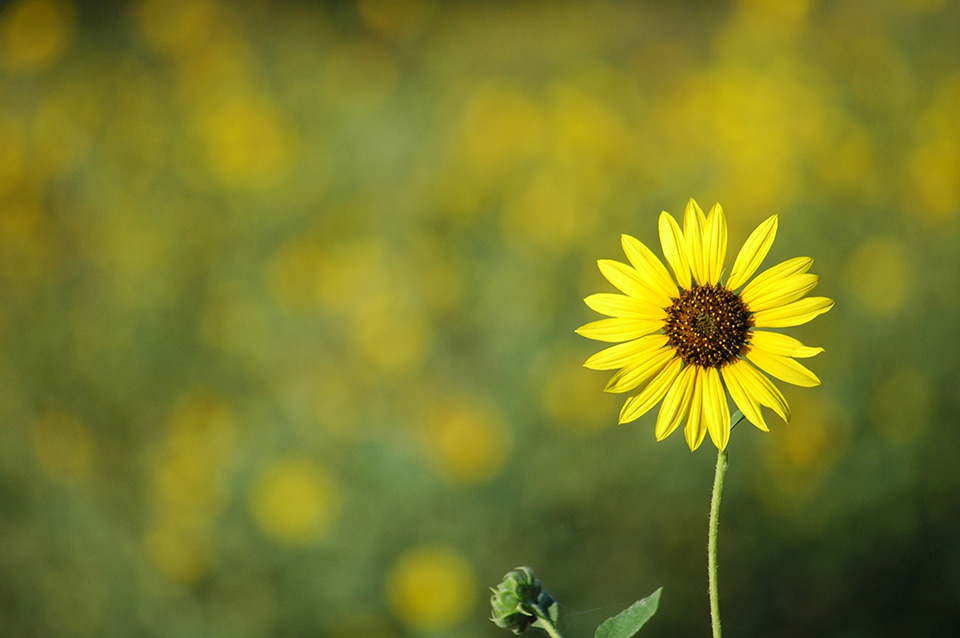
You can “kill” a great photo if that photo has a cluttered and intrusive background.
You have to remember that the art of photography is to make the subject of the shot the “hero” and then having identified the hero work out what you have to do to find the correct techniques to give the subject pride of place.
Take a look at the photo with the article this week. It is of a field of sunflowers, but the photographer just wanted one sunflower. This required the photographer being able to have one sunflower in focus and all the others out of focus. This we call using Depth of Field (DOF).
Depth of Field is merely the area between the foreground and the background in any photograph which has acceptable “sharpness”. To isolate your subject in a snapshot you should try and get the sharpness to begin just before your subject and end just behind the subject, your “hero”.
Now when selecting the point you focus on (with a portrait you should focus on the eyes) the Depth of Field will stretch in distance one third forward and two thirds back. It is this distance which is in your control and is done by manipulation of the aperture you shoot at. It’s the old “f stop” numbers again.
Most cameras will allow you to select between f 22 and f 2.8. For some weird reason (which can be explained by optical physics) the larger the number, the smaller the hole or aperture, the light comes through and conversely, the smaller the number, the larger the hole. More simply stated, starting at f 22 (small hole), the aperture progressively gets larger as you come down to f 2.8. Each “click” as you rotate the lens barrel represents one “f stop” and you will come down from f 22 to f 16, to f 11, f 8, f 5.6, f 4 and finally f2.8.
Now it is the size of the aperture that governs Depth of Field. Around f 22, the smallest aperture hole, there is great depth of field, while at f 2.8 the largest aperture hole, there is very shallow Depth of Field. Memorize f 22 equals maximum DOF, while f 2.8 equals minimum DOF and you are now set to manipulate your photographs any way you want.
When you want to take a portrait, focus on the eyes and set a wide aperture – generally around f 4 is satisfactory. You will get a Depth of Field, with a standard lens, and shooting about 2 meters from the subject, which will extend from around 200 mm in front to 400 mm behind. Anything further away will be gloriously out of focus, isolating your portrait subject from any distracting background, just like the photograph this week.
Conversely, if you want to shoot a landscape, you should focus on a point one third in towards the furthest away section of the photograph and set the aperture to the smallest hole possible, which for most cameras will be around f 22. Again, made simple – if the furthest point is 1000 meters away, then focus on a point about 300 meters away. With the one third forward and two thirds back rule, you will get a good DOF from the foreground, right the way through to 1000 meters in the distance. Simple, isn’t it, after you understand the basic principles of the optical laws.
If you have an “Aperture” mode in your camera it is even easier. Select the aperture mode first, then select the f stop to give you shallow DOF or deep DOF depending upon what you want, and the camera will adjust the shutter speed to suit. Distracting backgrounds are now a thing of the past!






